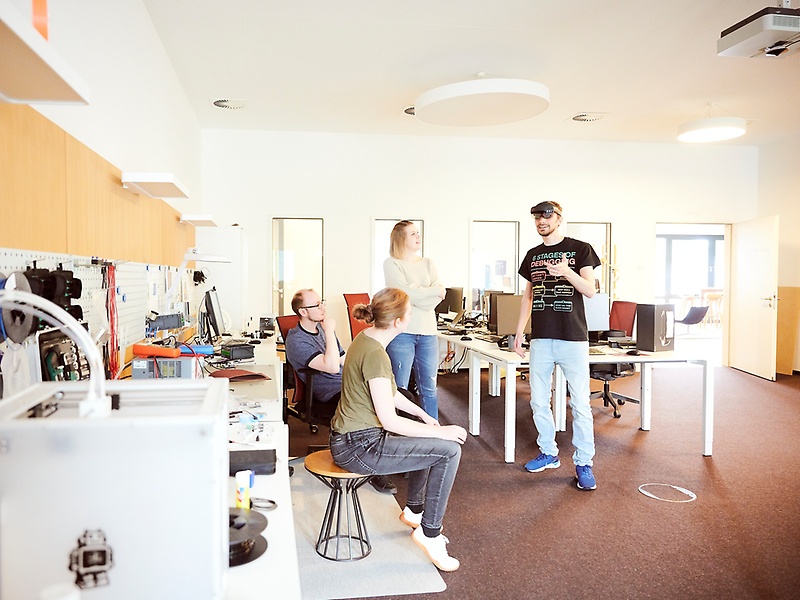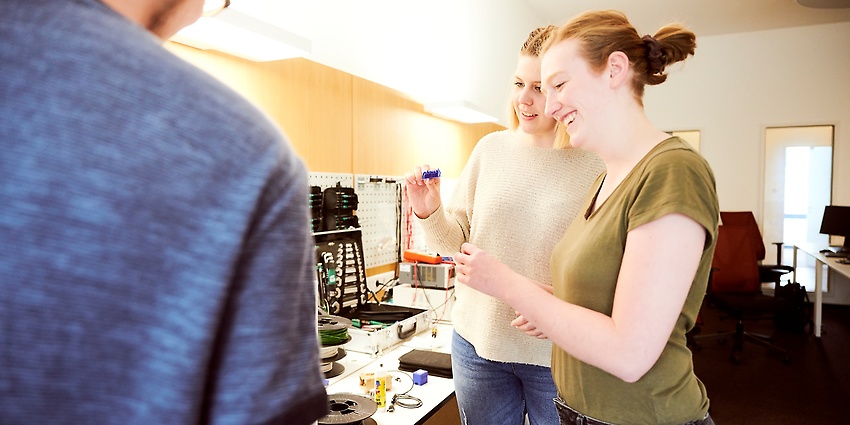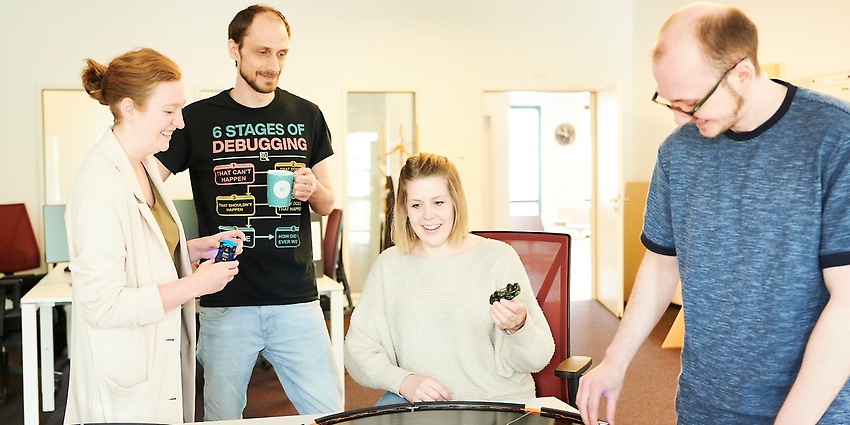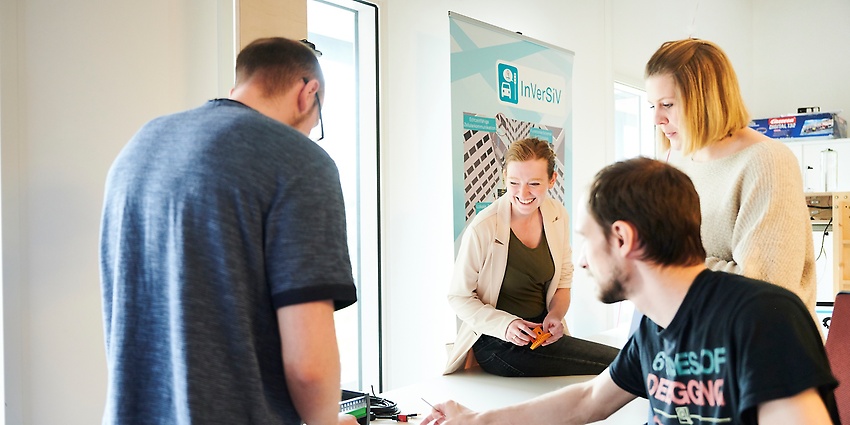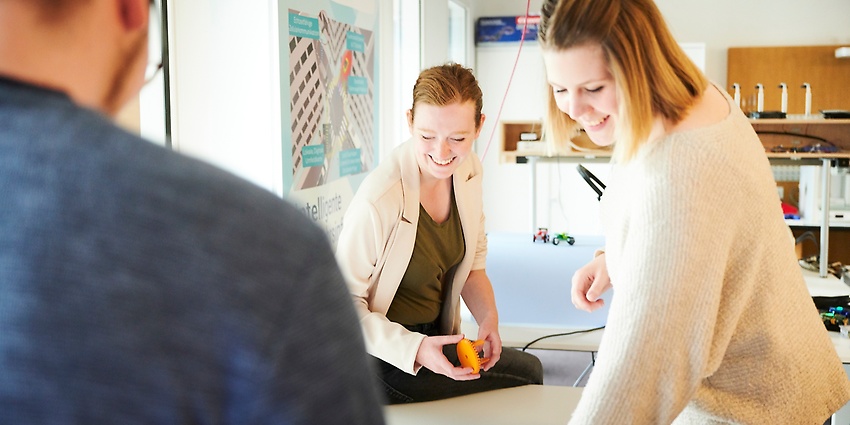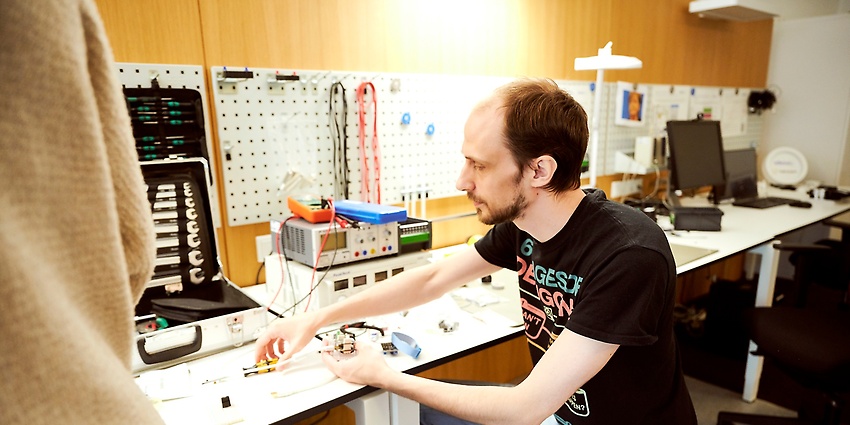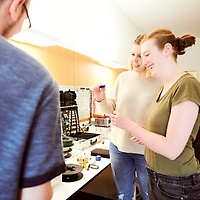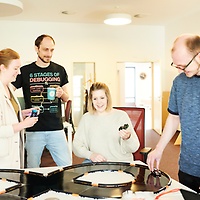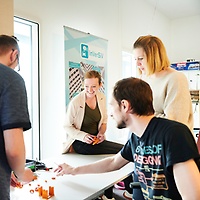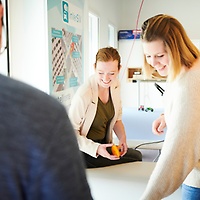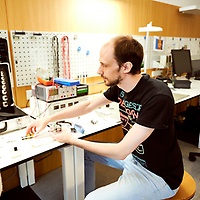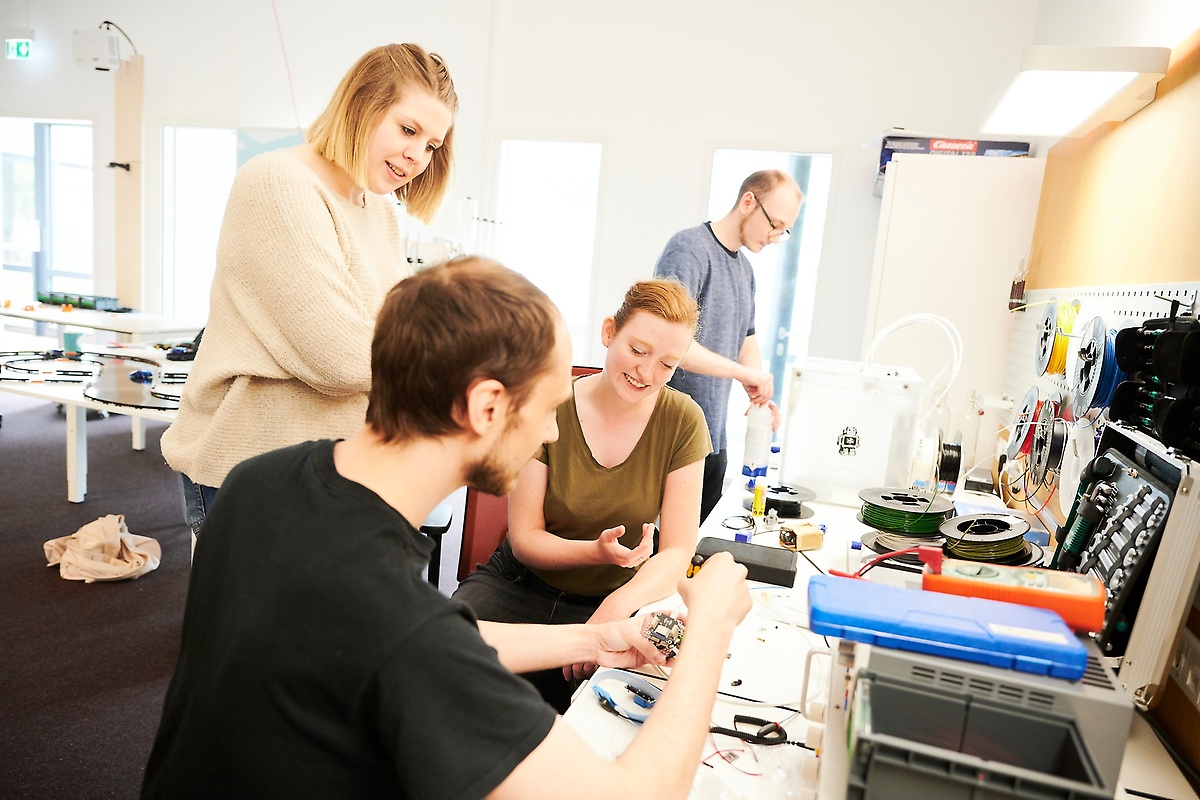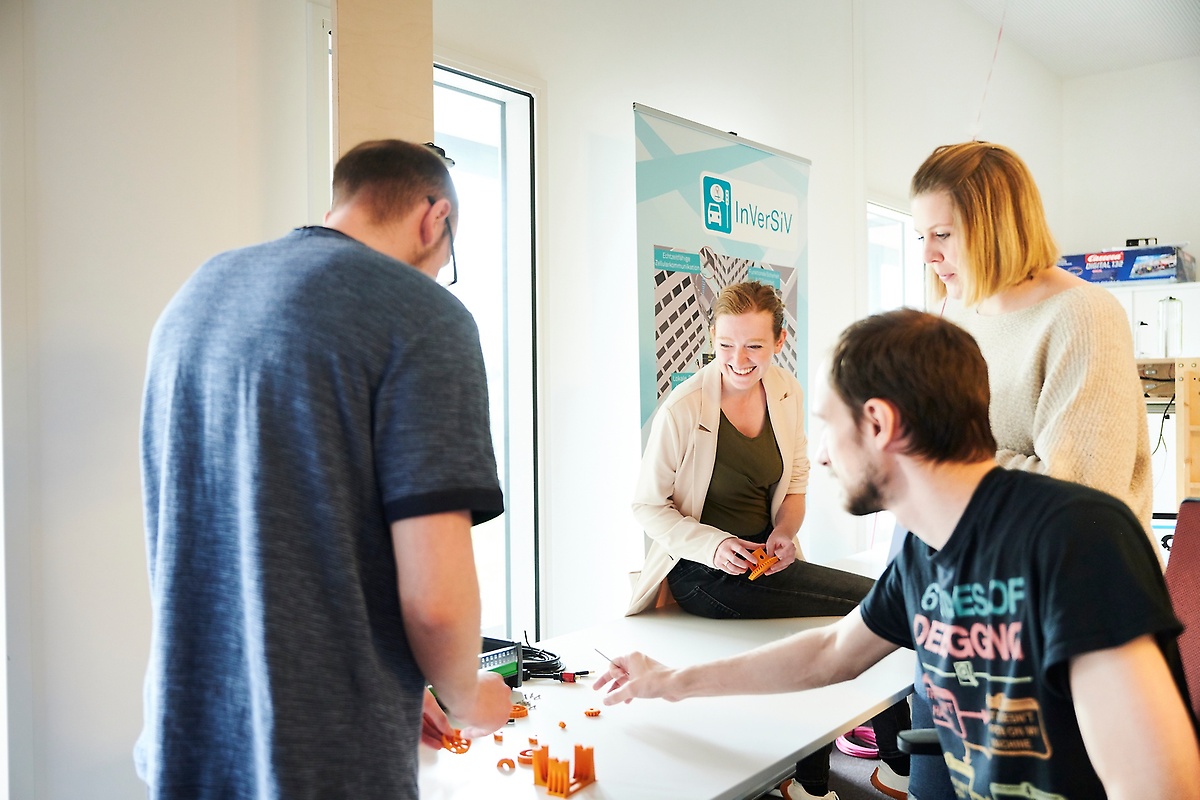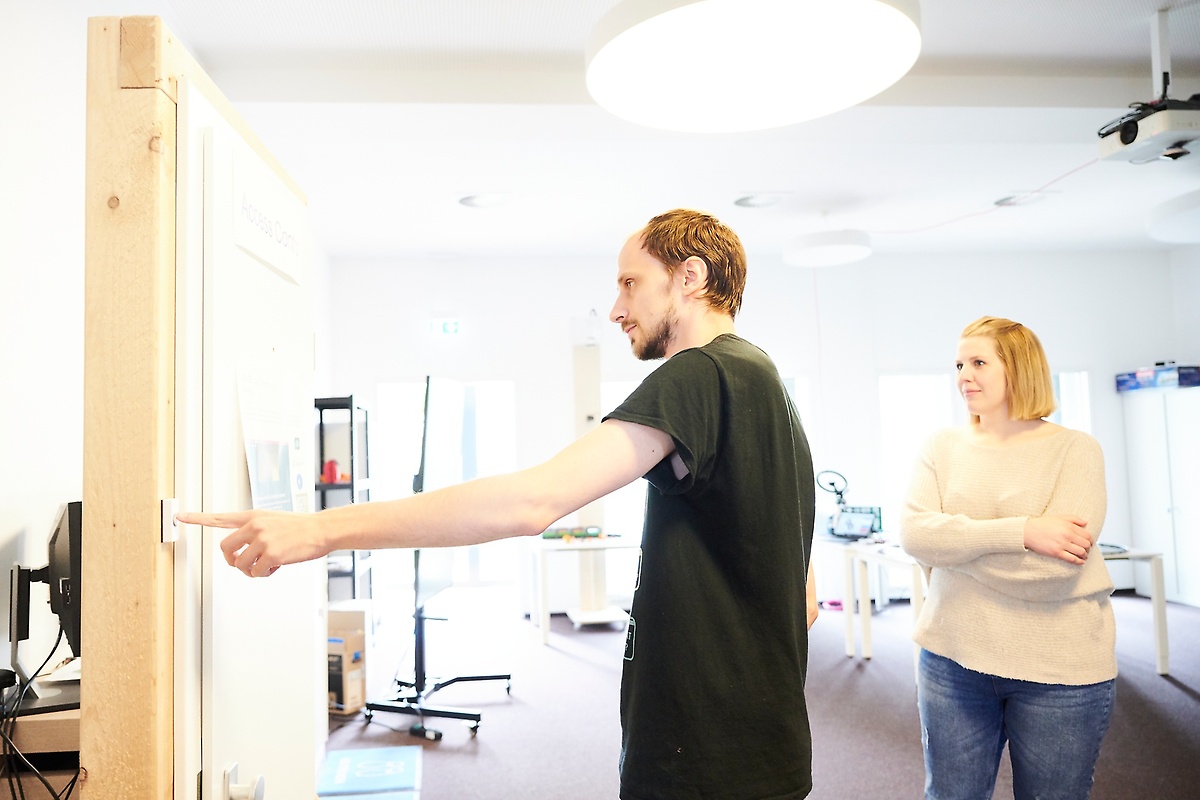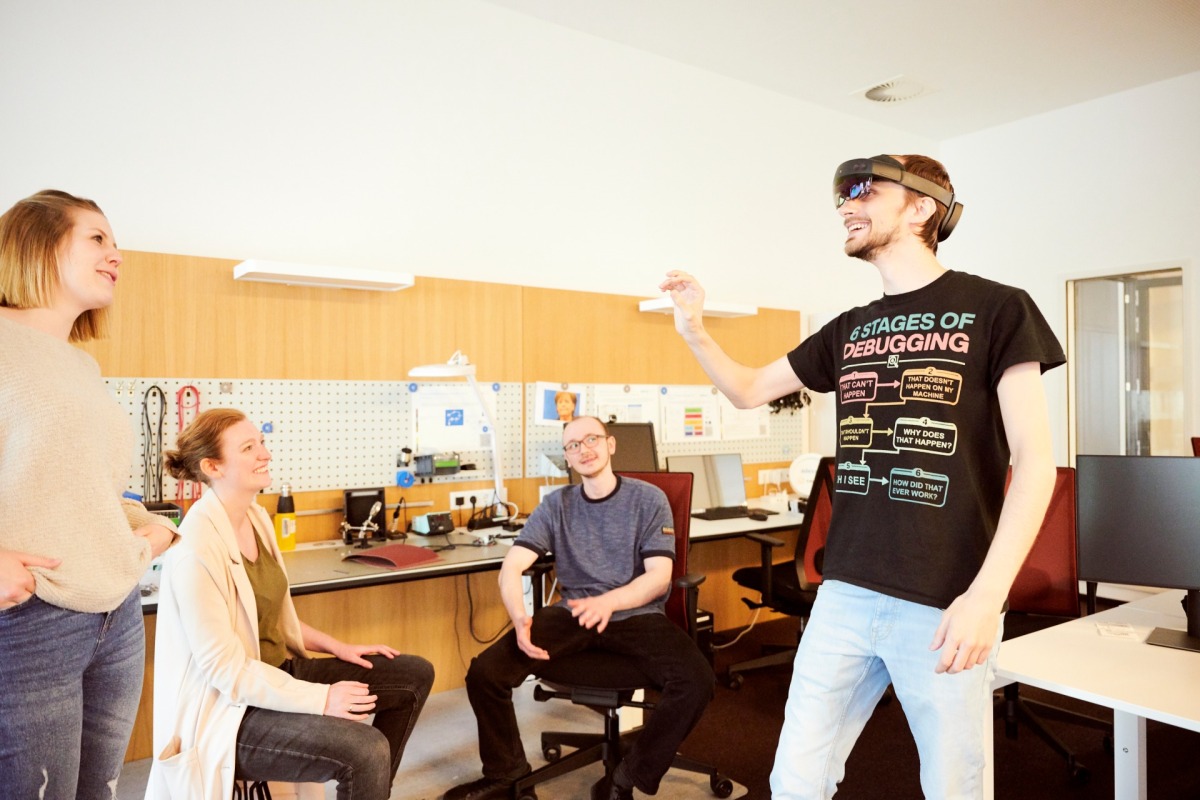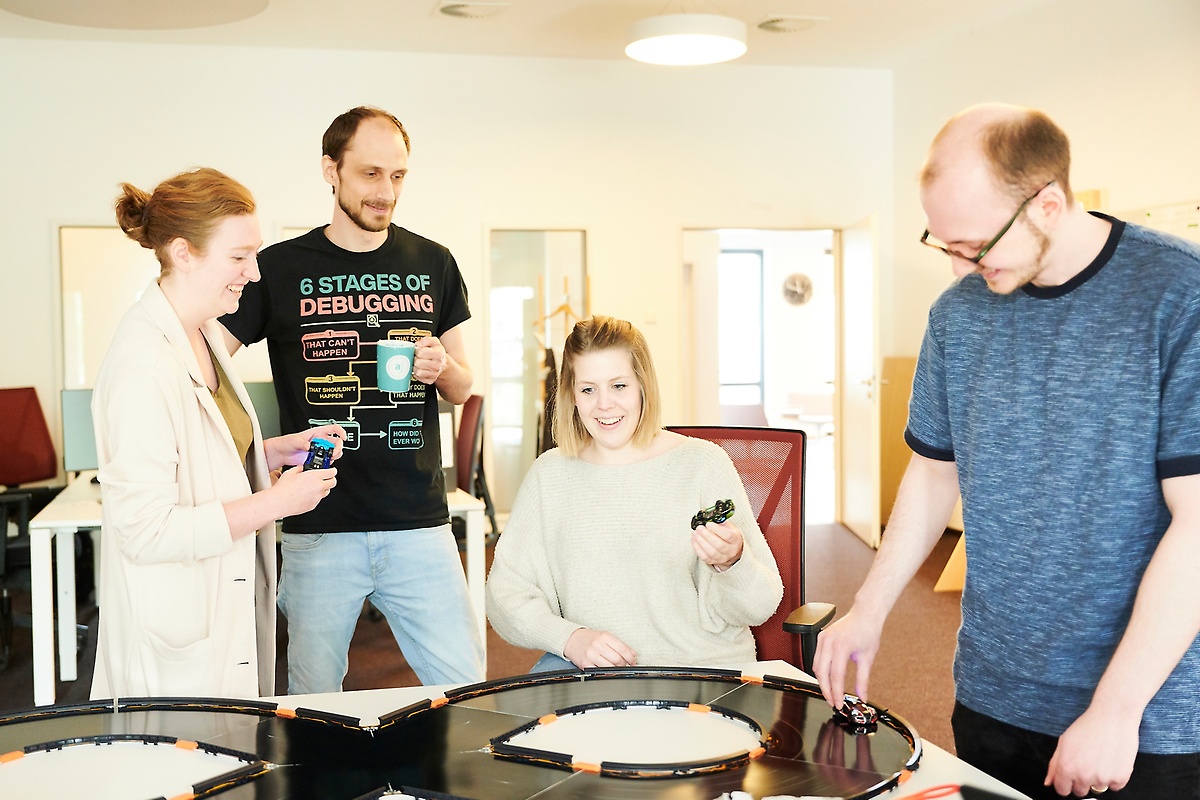The Digital Experience Lab is our creative space for students at adesso to combine the world of software engineering with the physical world. It is a place where clever and creative IT solutions are developed in order to solve everyday problems or simply for fun.
In addition to an electronics workbench and workstations outfitted with top-of-the-line equipment, our lab offers one thing above all: a shared space for unlimited creativity, experimentation and programming the future for the Internet of Things. Here, our students have the ability tinker around with their own cool projects and clever software solutions together, think outside the box, diligently code and try out and test their IoT solutions using prototype cyber-physical systems they build themselves.
